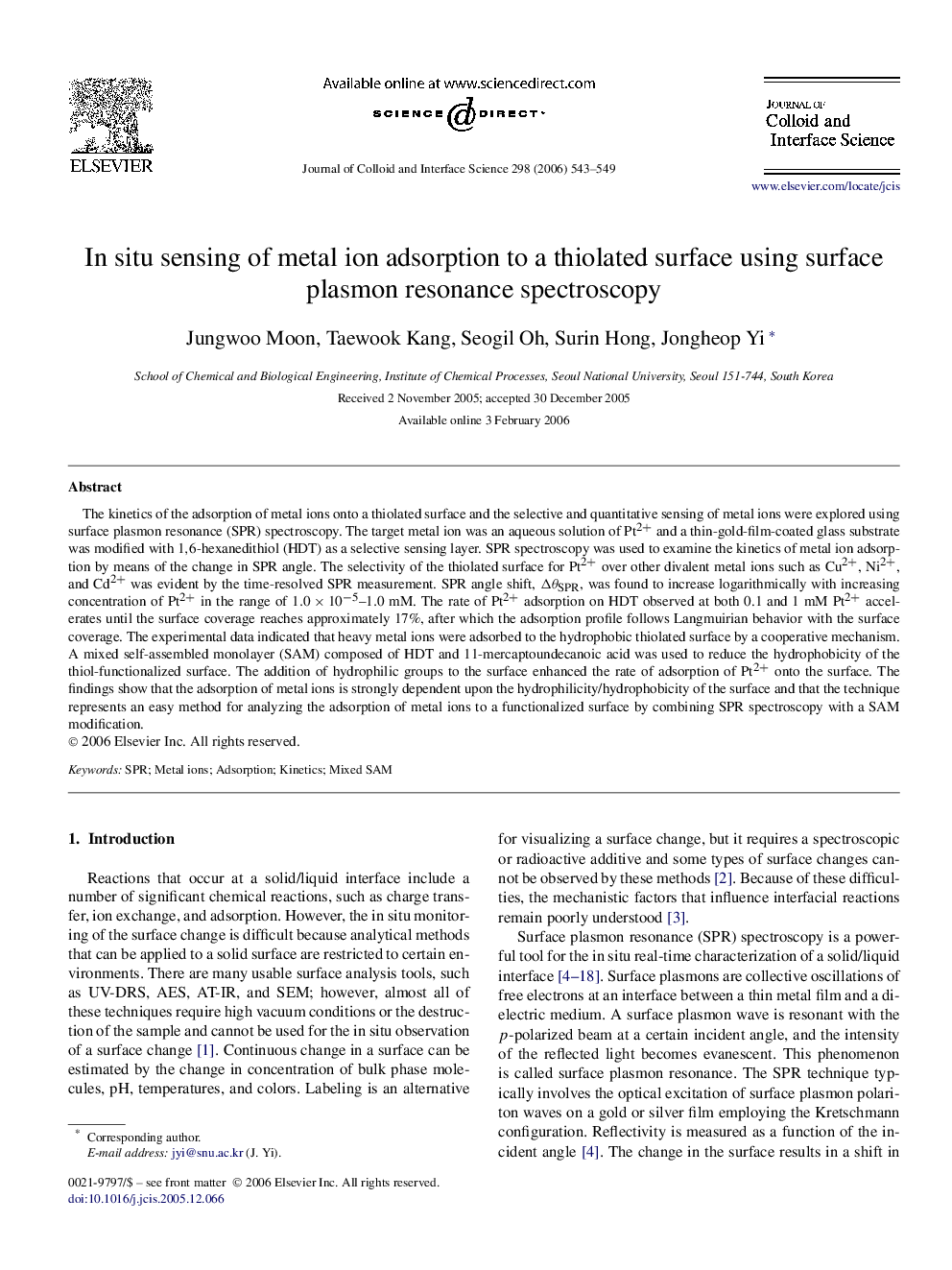| کد مقاله | کد نشریه | سال انتشار | مقاله انگلیسی | نسخه تمام متن |
|---|---|---|---|---|
| 613667 | 880726 | 2006 | 7 صفحه PDF | دانلود رایگان |

The kinetics of the adsorption of metal ions onto a thiolated surface and the selective and quantitative sensing of metal ions were explored using surface plasmon resonance (SPR) spectroscopy. The target metal ion was an aqueous solution of Pt2+ and a thin-gold-film-coated glass substrate was modified with 1,61,6-hexanedithiol (HDT) as a selective sensing layer. SPR spectroscopy was used to examine the kinetics of metal ion adsorption by means of the change in SPR angle. The selectivity of the thiolated surface for Pt2+ over other divalent metal ions such as Cu2+, Ni2+, and Cd2+ was evident by the time-resolved SPR measurement. SPR angle shift, ΔθSPRΔθSPR, was found to increase logarithmically with increasing concentration of Pt2+ in the range of 1.0×10−5–1.0mM. The rate of Pt2+ adsorption on HDT observed at both 0.1 and 1 mM Pt2+ accelerates until the surface coverage reaches approximately 17%, after which the adsorption profile follows Langmuirian behavior with the surface coverage. The experimental data indicated that heavy metal ions were adsorbed to the hydrophobic thiolated surface by a cooperative mechanism. A mixed self-assembled monolayer (SAM) composed of HDT and 11-mercaptoundecanoic acid was used to reduce the hydrophobicity of the thiol-functionalized surface. The addition of hydrophilic groups to the surface enhanced the rate of adsorption of Pt2+ onto the surface. The findings show that the adsorption of metal ions is strongly dependent upon the hydrophilicity/hydrophobicity of the surface and that the technique represents an easy method for analyzing the adsorption of metal ions to a functionalized surface by combining SPR spectroscopy with a SAM modification.
The kinetics of the adsorption of metal ions to a thiolated surface and the selective and quantitative sensing of metal ions was explored using surface plasmon resonance (SPR) spectroscopy. The target metal ion was Pt2+ in an aqueous solution and a thin gold film coated on glass substrate was modified with 1,6-hexanedithiol (HDT) as a selective sensing layer. SPR spectroscopy was used to investigate the kinetics of metal ion adsorption by means of the change in SPR angle. Experimental data indicated that metal ions are adsorbed to a hydrophobic thiolated surface by a cooperative mechanism. This technique represents a facile method for analyzing the adsorption of metal ions onto a functionalized surface by combining SPR spectroscopy with a SAM modification.Figure optionsDownload as PowerPoint slide
Journal: Journal of Colloid and Interface Science - Volume 298, Issue 2, 15 June 2006, Pages 543–549